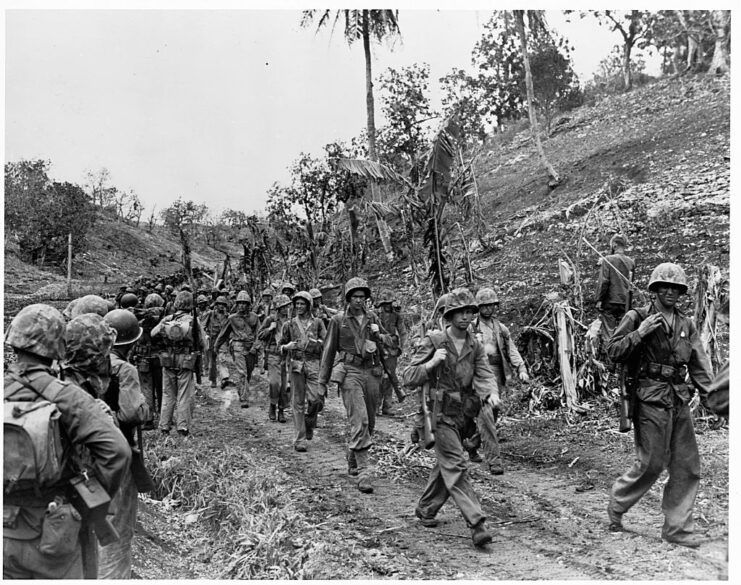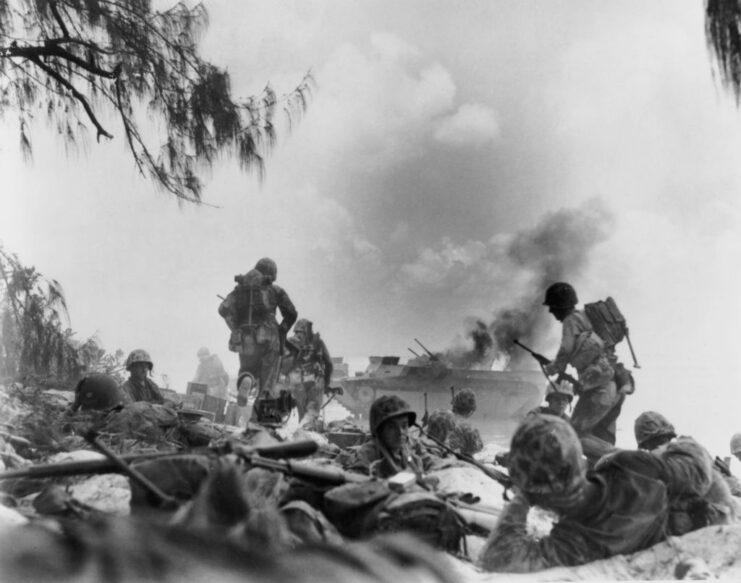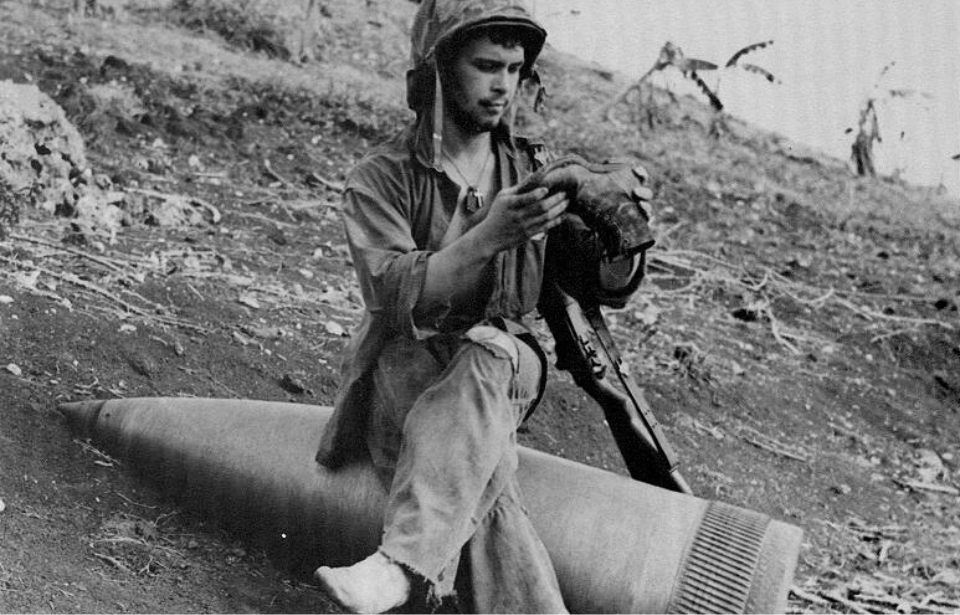The Battle of Saipan, fought between June 15 to July 9, 1944, was a significant turning point in the Pacific Theater. As part of the Mariana and Palau Islands Campaign, the island became the focal point of intense fighting between the American and Japanese forces. The strategic importance of Saipan made the battle one of the most crucial engagements of World War II, and it provided the Allies with a valuable stepping stone toward the Japanese mainland.

The Battle of Saipan began with a massive amphibious assault, when the American forces – in particular, the 2nd and 4th Marine Divisions and the 27th Infantry Division – landed on the island’s western coast. One of the Marines, Pfc. Raymond L. Hubert, was captured on camera by Staff Sgt. Andrew B. Knight in an image titled Sittin’ On Top of the World.
Hubert, who served as a Browning Automatic Rifleman during the engagement, sits on an unexploded 16-inch shell while he removes three days’ worth of sand from his field boots. He’d been innocently cleaning his feet in the surf near Tanapag Harbor when he was asked to “do something” for a photo. A friend leant him an M1 Garand to help set the scene.
A version of the photo was added to an unknown publication with the caption, “He may have started out sitting on a dud 16-inch Navy shell, enjoying a smoke while emptying sand from his ‘boondockers,’ but by the end of the campaign, three weeks later, he had had too little sleep, too many fire fights, and too many buddies dead.” This rings true, as Hubert and his fellow Marines encountered fierce resistance from the well-fortified Japanese garrison, led by Lt. Gen. Yoshitsugu Saitō.
The Japanese, determined to defend their homeland, fought with unparalleled ferocity, employing a combination of entrenched positions, underground bunkers and kamikaze attacks. Despite the heavy casualties suffered by both sides, the American forces slowly but steadily advanced, gaining ground with each passing day.
On July 9, 1944, Saipan was declared secure by the Allies, ushering in an end to the battle. Saitō, recognizing the futility of the continued fighting, opted to die by ritual suicide, rather than surrender.
There were an estimated 26,000 civilians on the island when the Americans landed. Many were killed during the battle, but significant numbers opted for suicide, rather than be taken as prisoners of war (POWs). The fighting resulted in over 3,000 American and more than 25,000 Japanese military fatalities.

The capture of Saipan provided the Allies with vital airfields from which Boeing B-29 Superfortresses could conduct sustained bombing raids on the Japanese mainland. This development proved to be a pivotal turning point. It severely crippled Japan’s industrial and military infrastructure, and sowed seeds of fear and uncertainty among the Japanese populace.
More from us: Celebrations Erupted After Paris Was Liberated By the Allies Toward the End of World War II
Moreover, the loss of Saipan and the subsequent American occupation of the Northern Mariana Islands effectively isolated the Japanese home islands from their South Pacific territories, making the task of defending them even more challenging.
